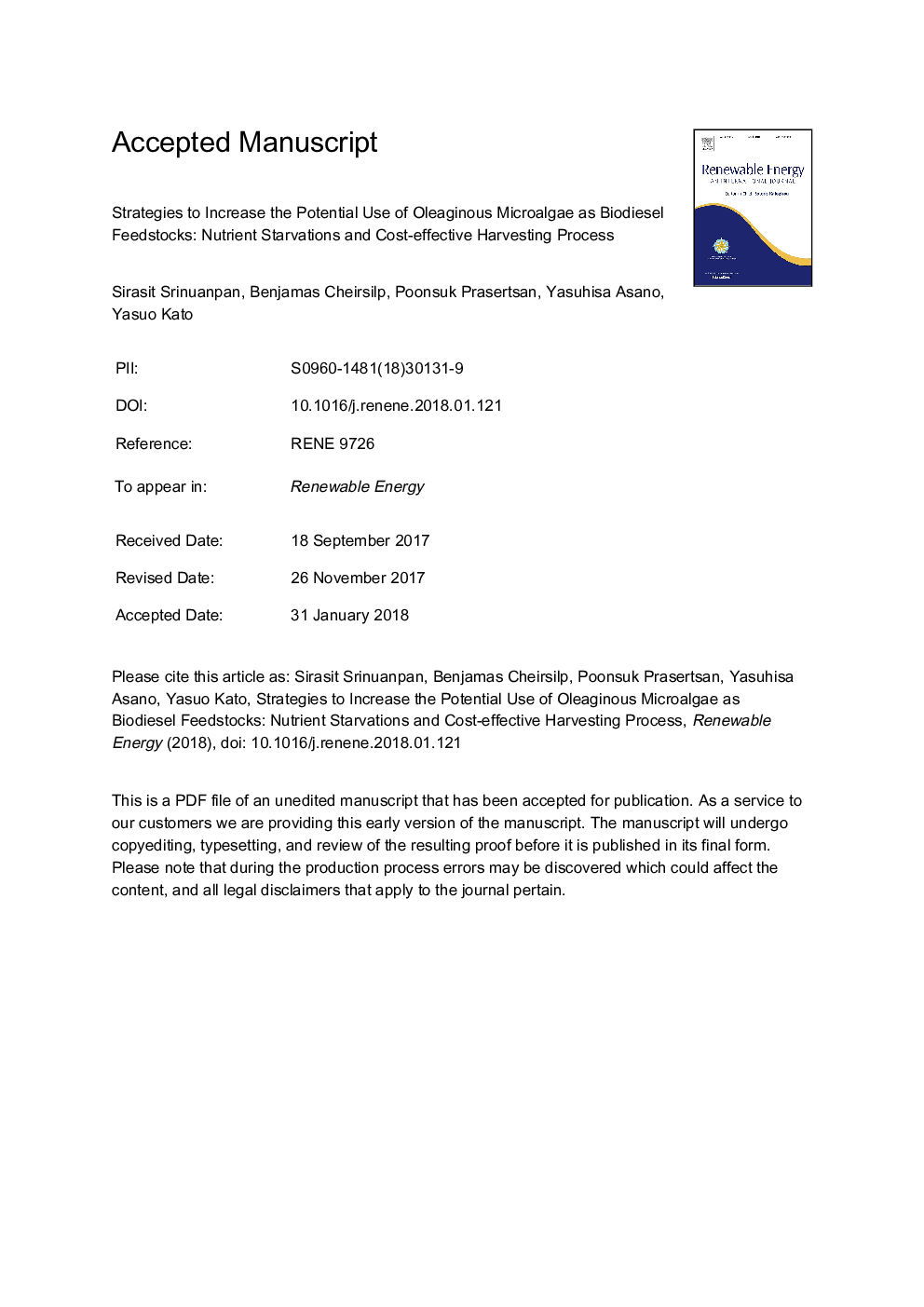| Article ID | Journal | Published Year | Pages | File Type |
|---|---|---|---|---|
| 6764664 | Renewable Energy | 2018 | 42 Pages |
Abstract
Two locally isolated oleaginous microalgae from Songkhla Lake in Thailand were identified as Micractinium reisseri SIT04 and Scenedesmus obliquus SIT06. The effects of nutrient starvations on the responses of these two strains were intensively investigated in order to increase their lipid contents and manipulate their fatty acid compositions for suitable use as biodiesel feedstocks. Starvation of either phosphorus or ferrous less affected cell growth but did stimulate lipid accumulation of both strains by 1.2 folds. While nitrogen starvation severely limited cell growth but most effectively increased lipid content of both strains by 1.54 folds for M. reisseri SIT04 (up to 36.6%) and by 1.6 folds for S. obliquus SIT06 (up to 56.8%). The lipid accumulated during nitrogen starvation contained higher saturated fatty acids which could make biodiesel with better fuel properties and higher oxidative stability. The harvesting process through bioflocculation was optimized by Response Surface Methodology. The maximum flocculation efficiency greater than 99.5% was achieved using minimum dosage of chitosan as bioflocculant. This study has revealed the strategies to increase the potential use of oleaginous microalgae as biodiesel feedstocks and the cost-effective process for the harvesting of microalgal biomass.
Related Topics
Physical Sciences and Engineering
Energy
Renewable Energy, Sustainability and the Environment
Authors
Sirasit Srinuanpan, Benjamas Cheirsilp, Poonsuk Prasertsan, Yasuo Kato, Yasuhisa Asano,
